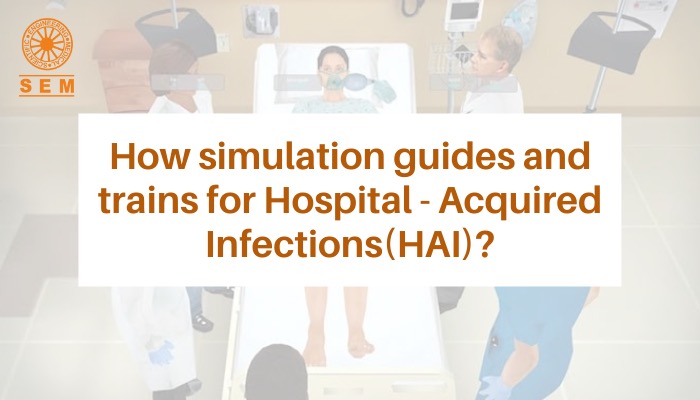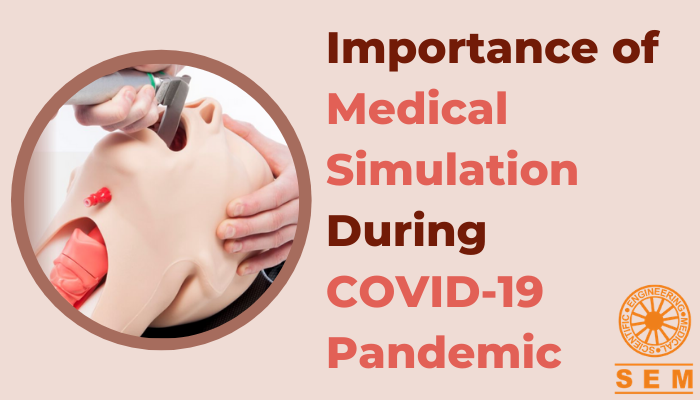How simulation guides and trains for Hospital – Acquired Infections (HAI)?
Healthcare facilities work at large with contractor employees and healthcare workers to achieve operational efficiency. The elevator technicians, electricians, flooring contractors, painters, plumbers, etc. lack the functional knowledge of the adverse effects of their work on a low immunity patient. Maintaining hand hygiene has been the propaganda for the last two years due to the COVID-19 pandemic. Guiding and training these employees will certainly help to reduce the overwhelming number of Hospital-acquired Infections (HAI). Hospital-acquired infections (HAI) are a major cause of morbidity and mortality. Infections are commonly spread via the hands, so maintaining good hand hygiene habits is vital to prevent the spread of HAIs. Infection-control training can be provided to the personnel with the help of Scenario-based simulation training to hone good hand hygiene habits. Scenario-based training helps these habits become second nature, thus improving patient safety and the quality of care they receive. Find out how medical simulation is transforming education and training.
The infection gets transmitted with a source of infecting microorganisms, a susceptible host, and a means of transmission for the microorganism to the host.
A source of infection of Hospital-acquired Infections (HAI)
Often while offering healthcare facilities the patients are exposed to multiple microorganisms like viruses, bacteria, fungi, etc. They can be transmitted by another infected patient in the premises, contaminated medical equipment or devices, the hospital environment, health care workers, contaminated drugs, food and patient care equipment.
A Host to acquire Hospital-acquired Infections (HAI)
A susceptible host is an immunocompromised patient who is vulnerable to get infected. The factors that affect the condition could be age, underlying diseases, severe illness, immunosuppressive medications, surgical treatments.
The transmission of Hospital-acquired Infections (HAI)
Multiple intrinsic and extrinsic risk factors predispose patients to HAIs. The transmission of HAIs occurs through common routes like direct or indirect contact, respiratory droplets generated during coughing, sneezing, through airborne microorganisms, common carriers of the infection.
How to Prevent the Spread ?
Multiple factors influence the development of HAIs. Some of them are the acute illness of a patient and his overall health, the medical device/medicine usage for his treatment, some administrative variables like level of nurse education, the ratio of nurse to patients, etc.
To prevent the spread of HAIs, simulation training through scenario-based compliance can be practised.
- Maintaining an ideal nurse to patient ratio in hospitals could reduce overcrowding and thus increase the adherence to hand hygiene.
- Usage of alcohol-based waterless hand rubs to maintain hand hygiene.
- Monitoring the compliance of hand hygiene and glove usage
- Maintaining Environmental Cleanliness will reduce the probability of contamination.
- Reduce occupational transmission of organisms from patient to health care worker through proper use of personal protective equipment
- Post visual alerts instructing patients to notify respiratory infection.
- Evaluate using documentation of the use of sterile barriers, time of antibiotic prophylaxis, the fullness of needle disposal containers, etc.
How does Simulation Training help?
Simulation can be a useful tool to make the healthcare staff aware of the infection control protocols. Small scale scenarios can help with the compliance and control protocols.
This training helps health care workers to work on their knowledge base as well as its application. To know about the clinical skills lab setup and benefits, click here.


